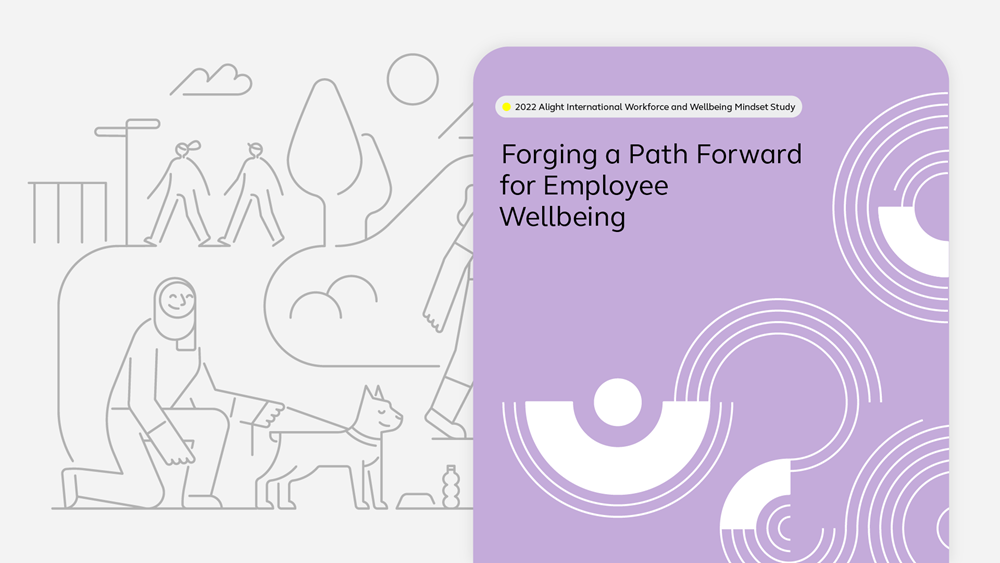
So, you’ve done all the research and know that improving employee wellbeing is the new business priority. Not only does a comprehensive wellbeing program improve productivity and lower absence rates, but it also serves to improve your company’s overall performance. What's next?
Wellbeing at-a-glance
According to Alight’s International workforce and wellbeing mindset report:
- Fewer than half (44%) of employees rate their overall wellbeing positively
- More than half of employees (54%) say work flexibility is key to managing responsibilities outside work
- Just 34% of employees feel their employers genuinely care about their wellbeing
Looking at the above three statistics, it’s clear that a wellbeing program must be adapted to individuals’ needs for it to be effective; the key is ensuring that your people feel seen and valued.
Wellbeing strategy: 4 steps to getting started
The idea of a comprehensive wellbeing strategy may seem overwhelming but with a little planning and help from the right human capital services provider, you can develop a program that prioritizes wellbeing and demonstrates the value of your people. Here are four fundamentals you need to get started:
- Focus on the four core elements of wellbeing (mind, body, wallet, life). Be sure to feature immediate support, as well as ongoing and long-term preventative approaches to help people thrive at work. Wellbeing is not a one-time activity, and your people will appreciate knowing that you’ve invested in them for the long-haul.
- Incorporate data from your HR and payroll processes to identify areas of improvement. Use this information to boost existing resources and expand benefits to reflect what’s most important to your people. Leverage feedback from surveys, interviews and questionnaires to help prioritize the rollout of new benefits.
- Promote people who exhibit empathy and emotional intelligence. Since only 60% of managers feel comfortable having conversations with direct reports about wellbeing, you’ll want to offer additional training around effective communication. Only then can you hold managers accountable for high performance and employee wellbeing.
- Use an employee wellbeing platform for your benefits offerings. The average employer currently has up to 15 wellbeing offerings from 10 vendors. This doesn’t include the additional options offered to employees via health carriers, Human Capital Management (HCM) platforms and/or learning and development tools. When services are delivered via complex setups and interfaces, there’s a high risk of information paralysis. Users don’t know where to start, what’s useful or how to progress with assistance. It’s also likely that many will access information using a mobile device, so a responsive, consumer-like user interface and signposting are important for service uptake. The higher the usage, the better the measurable wellbeing improvements will be.
Need help with your employee wellbeing strategy or solution?
Contact Alight’s Employee Wellbeing Solutions team today.


